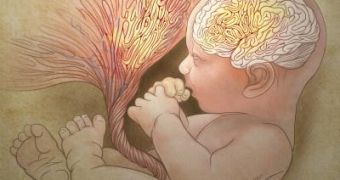This April 25's issue of the scientific journal Biological Psychiatry witnessed the publication of a new study stating that abnormalities in the placenta are a fairly reliable indicator of an infant's chances of being affected by autism.
The study maintains that, by investigating a child's placenta, it might be possible to determine with a high degree of accuracy how likely that child is to develop autism.
In other words, the analysis of the placenta might make it possible for specialists to both diagnose and treat autism at an earlier time than they are currently able to.
The Yale School of Medicine researchers who pieced together this study list abnormal foldings in the placenta as an indicator of a child's higher risk of developing autism.
Abnormal cell growths known to the scientific community as trophoblast were also pinned down as an indicator of a higher autism risk, especially when they appeared in relatively large numbers.
“Regrettably couples without known genetic susceptibility must rely on identification of early signs or indicators that may not overtly manifest until the child's second or third year of life,” study senior author Harvey Kliman, M.D commented with respect to these findings.
“I hope that diagnosing the risk of developing autism by examining the placenta at birth will become routine, and that the children who are shown to have increased numbers of trophoblast inclusions will have early interventions and an improved quality of life as a result of this test,” said specialist further elaborated on the matter at hand. EurekAlert informs us that the conclusion that abnormalities in the placenta can and should be linked to a higher autism risk were reached following the researchers' analyzing the makeup of 117 placentas taken from infants born to at-risk families.
These placentas were compared to 100 normal ones taken from children born in the same geographic area.

 14 DAY TRIAL //
14 DAY TRIAL //